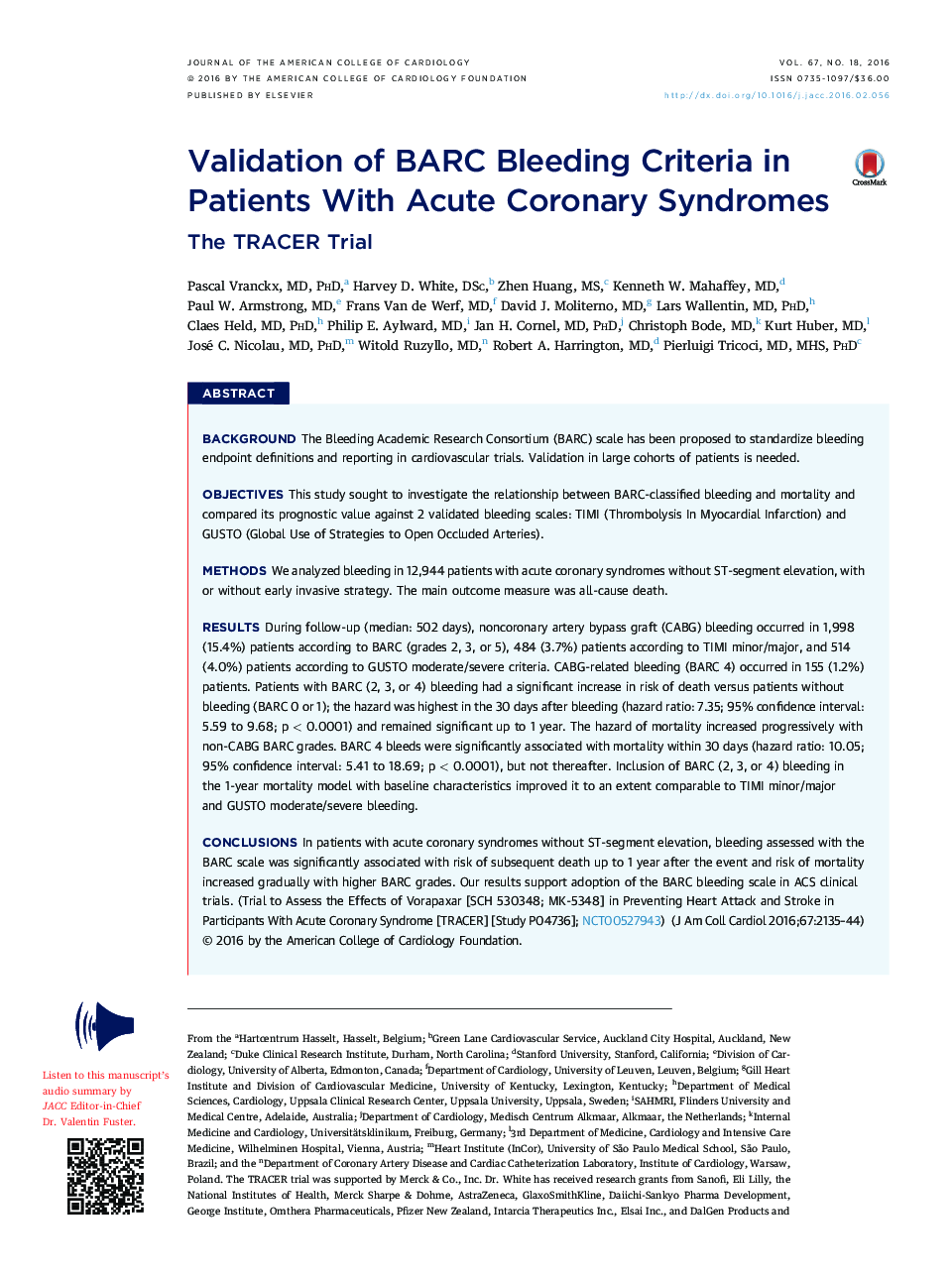| کد مقاله | کد نشریه | سال انتشار | مقاله انگلیسی | نسخه تمام متن |
|---|---|---|---|---|
| 5981926 | 1576994 | 2016 | 10 صفحه PDF | دانلود رایگان |

BackgroundThe Bleeding Academic Research Consortium (BARC) scale has been proposed to standardize bleeding endpoint definitions and reporting in cardiovascular trials. Validation in large cohorts of patients is needed.ObjectivesThis study sought to investigate the relationship between BARC-classified bleeding and mortality and compared its prognostic value against 2 validated bleeding scales: TIMI (Thrombolysis In Myocardial Infarction) and GUSTO (Global Use of Strategies to Open Occluded Arteries).MethodsWe analyzed bleeding in 12,944 patients with acute coronary syndromes without ST-segment elevation, with or without early invasive strategy. The main outcome measure was all-cause death.ResultsDuring follow-up (median: 502 days), noncoronary artery bypass graft (CABG) bleeding occurred in 1,998 (15.4%) patients according to BARC (grades 2, 3, or 5), 484 (3.7%) patients according to TIMI minor/major, and 514 (4.0%) patients according to GUSTO moderate/severe criteria. CABG-related bleeding (BARC 4) occurred in 155 (1.2%) patients. Patients with BARC (2, 3, or 4) bleeding had a significant increase in risk of death versus patients without bleeding (BARC 0 or 1); the hazard was highest in the 30 days after bleeding (hazard ratio: 7.35; 95% confidence interval: 5.59 to 9.68; p < 0.0001) and remained significant up to 1 year. The hazard of mortality increased progressively with non-CABG BARC grades. BARC 4 bleeds were significantly associated with mortality within 30 days (hazard ratio: 10.05; 95% confidence interval: 5.41 to 18.69; p < 0.0001), but not thereafter. Inclusion of BARC (2, 3, or 4) bleeding in the 1-year mortality model with baseline characteristics improved it to an extent comparable to TIMI minor/major and GUSTO moderate/severe bleeding.ConclusionsIn patients with acute coronary syndromes without ST-segment elevation, bleeding assessed with the BARC scale was significantly associated with risk of subsequent death up to 1 year after the event and risk of mortality increased gradually with higher BARC grades. Our results support adoption of the BARC bleeding scale in ACS clinical trials. (Trial to Assess the Effects of Vorapaxar [SCH 530348; MK-5348] in Preventing Heart Attack and Stroke in Participants With Acute Coronary Syndrome [TRACER] [Study P04736]; NCT00527943)
Journal: Journal of the American College of Cardiology - Volume 67, Issue 18, 10 May 2016, Pages 2135-2144